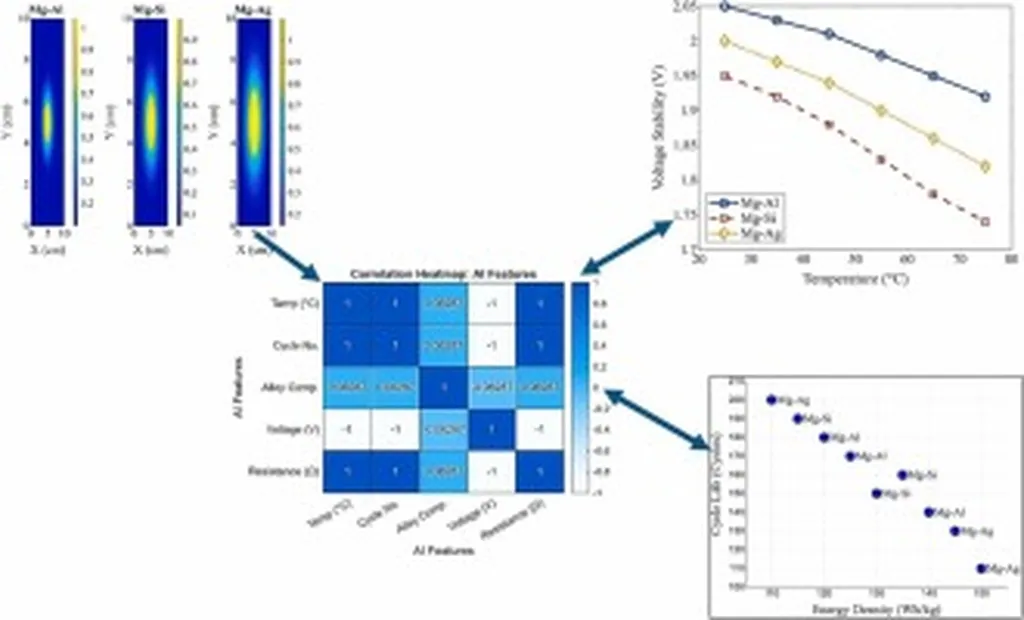In the quest to enhance the performance of materials under extreme conditions, researchers have turned to advanced computational techniques to optimize tribological behavior—friction, wear, and lubrication—of magnesium alloys. A recent study published in *Materials Research* (or *Pesquisa em Materiais* in English) has made significant strides in this area, offering promising insights for industries where energy efficiency and durability are paramount.
The research, led by Beniyel Muthuraj, focuses on the magnesium alloy AZ91D, a material widely used in automotive and aerospace applications due to its lightweight properties. The study employs an artificial neural network (ANN) model to predict the wear rate and friction coefficient of AZ91D under elevated temperatures, a critical factor in high-performance environments. “The goal was to develop a robust predictive model that could help us understand how different parameters influence the tribological behavior of AZ91D,” Muthuraj explains. “By optimizing these parameters, we can significantly enhance the material’s performance and longevity.”
The study utilized a pin-on-disc tribometer to gather experimental data, varying sliding velocity, applied load, sliding distance, and chamber temperature. A total of 27 experimental designs were devised using a Box-Behnken design, ensuring a comprehensive exploration of the parameter space. The ANN model, trained with Bayesian regularization, demonstrated remarkable accuracy in predicting wear rate and coefficient of friction. “The Bayesian approach helped us fine-tune the model, ensuring it generalizes well to new data,” Muthuraj notes.
One of the most compelling aspects of this research is the application of a multi-objective Pareto-based genetic algorithm (GA) to optimize tribological performance. The algorithm identified an ideal solution that minimizes both wear rate and coefficient of friction, suggesting a sliding velocity of 2 m/s, a load of 5 kg, a sliding distance of 1.5 km, and a chamber temperature of 143°C. This optimal configuration yields a minimal wear rate of 1.7891 mm³/kg·km and a coefficient of friction of 0.1435, a significant improvement over conventional approaches.
The study also delved into the microstructural analysis of worn surfaces using Energy Dispersive Spectroscopy (EDS) and Scanning Electron Microscopy (SEM). The findings revealed that the wear rate decreases with increasing load and sliding velocity at higher temperatures, attributed to the formation of an oxide layer that enhances wear resistance. “This oxide layer acts as a protective barrier, reducing wear even under high loads and sliding speeds,” Muthuraj explains. “Understanding this mechanism is crucial for developing materials that can withstand extreme conditions.”
The implications of this research are far-reaching, particularly for the energy sector. In applications such as power generation and transportation, where materials are subjected to high temperatures and mechanical stresses, optimizing tribological behavior can lead to significant energy savings and improved component lifespan. “By leveraging advanced computational techniques, we can design materials that are not only lighter but also more durable and efficient,” Muthuraj says. “This is a game-changer for industries looking to enhance their performance and sustainability.”
As the demand for lightweight and high-performance materials continues to grow, research like this paves the way for innovative solutions that can meet the challenges of modern engineering. The study published in *Materials Research* serves as a testament to the power of combining experimental data with advanced computational models, offering a glimpse into the future of materials science.

